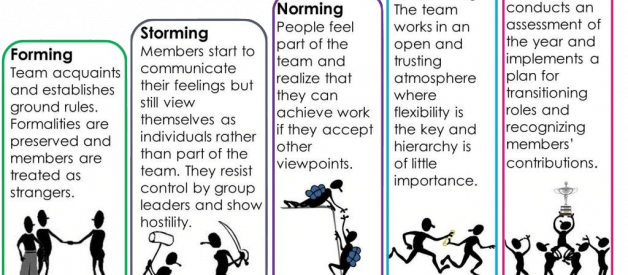
A team is the key to the success of a company. Ideas, client base, experience, capital, connections ? all this comes or leaves with time, so experienced investors are betting on the team firstly. Successful teams grow and develop in spite of changing market conditions, while ineffective collaboration can destroy any endeavor. But what makes a team successful? Scientists and psychologists have been looking for an answer to this question for many years, and now there are different models and approaches to determining teamwork effectiveness criteria.
1. Tuckman?s FSNP (FSNPA) model
Bruce Tuckman published Forming-Storming-Norming-Performing (FSNP) model in 1965 which illustrated sequential stages of group development. The professor said that these phases are all necessary and inevitable in order for the team to grow and achieve the highest effectiveness. In 1977, he, jointly with Mary Ann Jensen, added the fifth stage to the model ? adjourning ? that occurs when the team completes the current project. However, despite the fact that today this?s the most widely used model, some other researches revealed its weak points and suggested their own alternatives and modifications.

2. GRPI model: Goals, Roles, Processes, Interpersonal Relationships
Rubin, Plovnick and Fry were among the first who published team effectiveness model back in 1977. This is known as GRPI Model that stands for Goals, Roles, Processes ? Interpersonal relationships as key aspects of collaboration. Due to its simplicity (clear goals, specified roles, transparent workflow, trustful and flexible relationship ? what can be more obvious?), GRPI model is commonly used in team formation process, and in solving problems in teamworking caused by different reasons. However, like it?s with Tuckman?s and any widespread model, the GRPI model has some limitations.

3. The Katzenbach and Smith Model
The next model was proposed by Katzenbach and Smith in 1993 and described in their book ?The Wisdom of Teams?. The authors present the model of effective teamwork in the form of a triangle, which corners correspond to the main results of teamwork: collective work products, performance results and personal growth. The sides of the triangle are the three main factors contributing to the achievement of these goals: commitment to common goals, skills that complement one another and accountability ? mutual responsibility of all team members for their work.

4. The T7 Model of Team Effectiveness
Another attempt of research on the team effectiveness was done by Michael Lombardo and Robert Eichinger in 1995. They identified 5 factors inside the team and 2 factors outside which influence team effectiveness. The model they proposed is also known as T7 Model: each of the factors begins with the letter ?T?. The five internal factors are:
- Thrust ? a common team goal
- Trust ? confidence in teammates
- Talent ? required skills and experience
- Teaming Skills ? effective teamworking
- Task Skills ? ability to execute tasks
The two external team factors include:
- Team-Leader Fit ? leader?s ability to satisfy the team needs
- Team Support from the Organization ? whether the company?s policy is suitable for successful team work
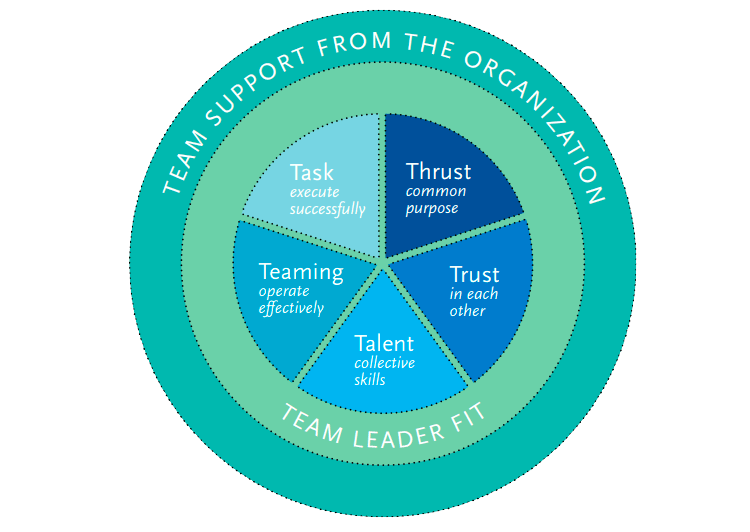
5. The LaFasto and Larson Model
Frank LaFasto and Carl Larson proposed another model of team effectiveness in 2001 which they refer to as the ?Five Dynamics of Team Work and Collaboration?. As for their model, 5 components that have to increase the likelihood of team effectiveness are:
- Team members ? what makes a good team member?
- Team relationship ? what behavior contributes to the effective interaction of team members?
- Team problem solving ? what behavior of team members is helpful at problem solving?
- Team leadership ? what behavior of leaders foster team success?
- Organization environment ? what company?s processes and policies contribute to clarity and commitment in the team?
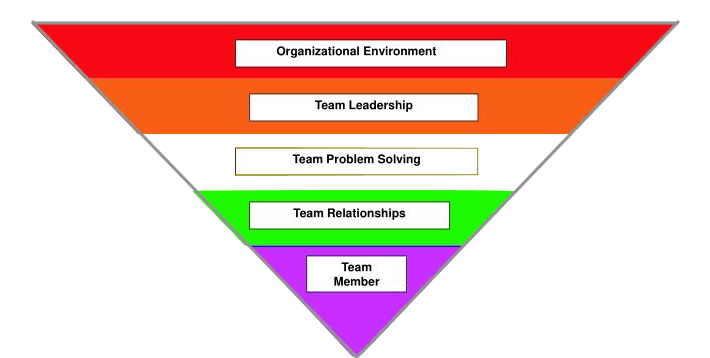
6. Hackman?s model
Richard Hackman proposed his own model of team effectiveness in 2002. His book ?Leading Teams: Setting the Stage for Great Performances? told about 5 necessary conditions which must boost team productivity. According to Hackman, team effectiveness can be measured by providing products or services that exceed customer expectations, growing team capabilities over time, and satisfying team member needs. He clarifies the five criteria of team effectiveness as follows:
- Real team that means existence of specified team tasks, clear terms, distribution of roles and rights and membership stability.
- Compelling direction ? whether the team has clear and consequential goals.
- Enabling structure ? whether the team has well organized management structure and workflow.
- Supportive context which should include all necessary resources, rewards and support required for successful collaboration.
- Expert coaching ? the possibility of high-quality training and mentoring for all team members.
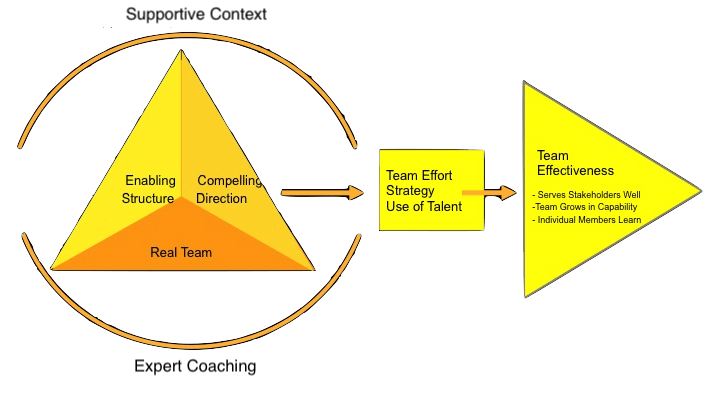
7. The Lencioni Model
Another interesting models of team effectiveness was developed by Lencioni in 2005 when he published his book ?The Five Dysfunctions of a Team?. He argued that all teams tend to be dysfunctional. Understanding the type and level of dysfunction can help to improve the teamwork. There are five potential dysfunctions of a team in Lencioni?s model:
- Absence of Trust
- Fear of Conflict
- Lack of Commitment
- Avoidance of Accountability
- Inattention to Results
The model of Lencioni is depicted in the form of a pyramid, and the elimination of dysfunctions should be carried from the bottom up. This effectiveness model is based on all possible issues, conflicts, intrigues and other conditions you should deal with in your work group to stay productive.
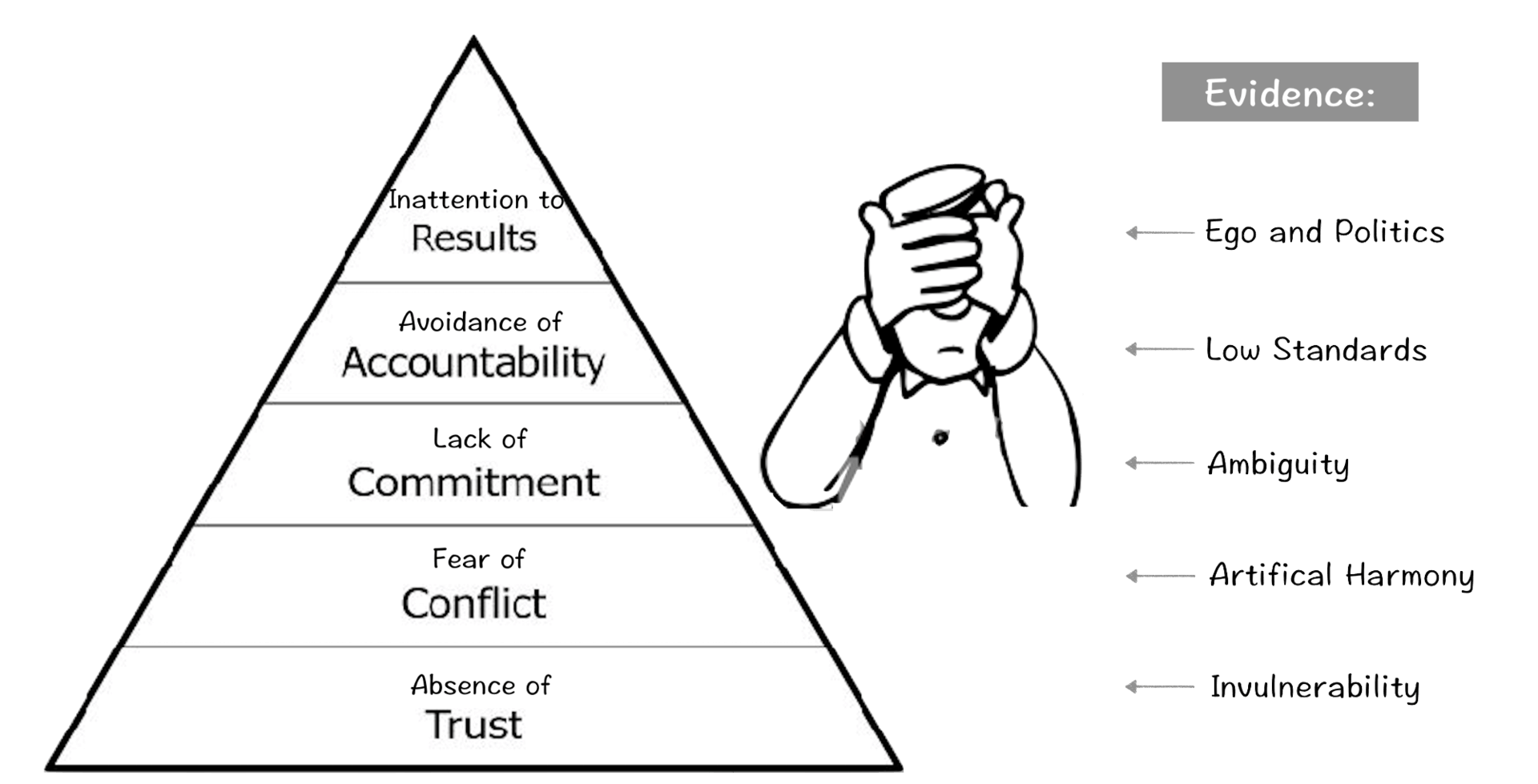
8. The five keys to a successful Google team
Another interesting research also known as ?Project Aristotle? and launched in 2012 was carried out by the Google team which specified the five keys to a successful team work as follows:
- Psychological safety: can we take risks on this team without feeling insecure or embarrassed?
- Dependability: can we count on each other to do high quality work on time?
- Structure & clarity: are goals, roles and plans on our team clear?
- Meaning of work: are we working on something that is personally important for each of us?
- Impact of work: do we fundamentally believe that the work we?re doing matters?
Other models
As you can see, there are many models, more and less known. In addition to the above, we can name other models of effective teamwork by:
- Driskell, Salas and Hogan (1987);
- Salas, Dickinson, Converse, and Tannenbaum (1992);
- Tannenbaum, Beard, and Salas (1992);
- Cannon-Bowers, Tannenbaum, Salas, and Volpe (1995);
- Klimoski and Jones (1995);
- Shanahan (2001);
- Rasker, van Vliet, van den Broek, and Essens (2001);
- Blendell, Henderson, Molloy, and Pascual (2001).
At first glance, they are very similar to each other and are based on obvious principles. But if you go into the essence, it turns out that each of them reveals some new facet of effective management and collaboration, allows you to better understand your own team and solve a number of problems with it. Each model is based on numerous studies of successful (and not only) cooperation in different industries. The variety of teams and conditions of work explains the existence of variety of models.
Originally published at Riter Blog. Stay aware of the latest updates and tips on project management and software development from our team by following us on Facebook and Twitter.
What to read next:
- Laws Of Productivity You Should Know About: Work Better, Not More
- Managing a Remote Team with High Performance
- Standardization vs Professionalism in Recruitment
